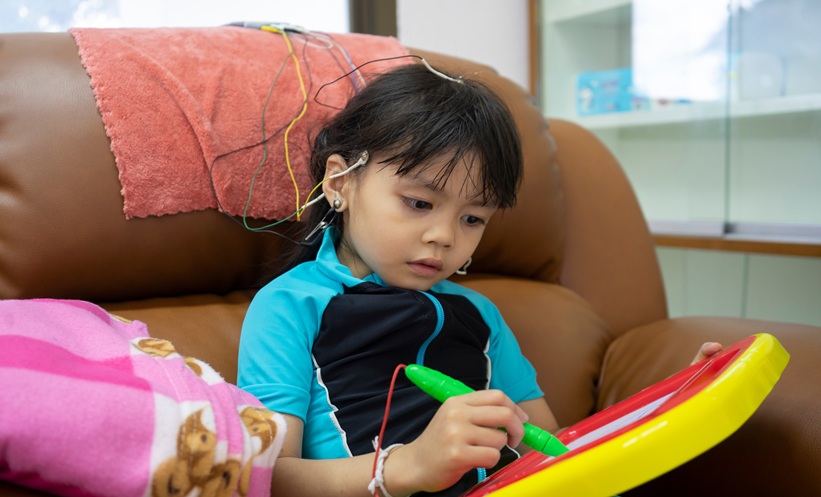BACKGROUND AND AIMS
Transcutaneous electroneurostimulation (TENS) has been used in the treatment of neuropathic pain for many years;1 however, the effectiveness of various modality of TENS for the treatment of diabetic peripheral neuropathy (DPN) has not been sufficiently studied.2
To study the dynamics of neuropathic pain and neurologic deficiency in management of DPN by using high frequency-low amplitude (HL) and low frequency-high amplitude (LH) TENS.
METHODOLOGY
A cohort of 122 patients with DPN of the lower limbs were examined. All patients were diagnosed with Type 2 diabetes mellitus and aged between 40 and 60 years. Forty one patients underwent pharmacotherapy only. In addition to pharmacotherapy, 41 patients were managed with HL TENS (100 Hz, 100 µs, 7mA) and 40 patients were treated with LH TENS (1 Hz, 200 µs 15 mA) of peroneal and tibial nerves. The cathode was fixed on the proximal end of nerve. The stimulating anode was moved from the proximal end of nerve distally. The course lasted for 15 days with 1 procedure per day.3 Neurologic examination before and after treatment included the following tests:
> Negative sensory symptoms (NS): Intensity of vibration, temperature, tactile, and pain hypoesthesia were measured using 5-point scales.
> Positive sensory symptoms (PS): Patients described subjective sensory disorders such as tingling, numbness, burning pain, and shooting feeling using 10-point scales.
> Neuropathic pain was studied using visual analogue scales (10-scores).
> Electromyography of peroneal and tibial nerves.
RESULTS
The analgesic effect of HL TENS proved to be more effective than LH TENS by 34.7%. Improvement of sensory impairments was observed in patients who underwent LH TENS more than HL TENS by 77.0%. On the second month of the follow-up period, NS continued to decline significantly after LH TENS by 19.0%. PS significantly regressed after application of HL TENS in comparison with LH TENS by 24.0%. Motor deficit regressed only after the use of LH TENS. Strength of ankle in dorsal flexion increased to 16.7% and in dorsal extension to 21.0%. Electromyography values of M-response and velocity of peroneal and tibial nerves were not significantly changed; however, in some cases there was an improvement in the M-response rate in electromyography after LH TENS.
CONCLUSION
HL TENS is a more effective treatment of neuropathic pain and PS. LH TENS is more effective in treatment of NS and motor deficit. In many cases, it also leads to a decrease in EMG disorders. TENS has a prolonged effect that lasts for 6 months of the follow-up period. The maximum therapeutic effect is observed in the second month of the follow-up period.








